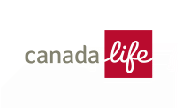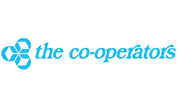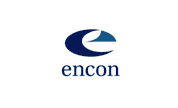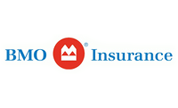





























Annual deductibles eliminate the claim and processing cost for employees who do not exceed the deductible. High deductibles control costs effectively when the primary focus of the benefit is to insure against infrequent, high cost expenses. One criticism of deductibles is that they penalize employees with low claims.
The most common deductible is $25 per individual each calendar year with the maximum deductible per family equal to twice the individual deductible. Another common deductible is a per prescription deduction (e.g. $5 per prescription). Deductibles of this nature function as a user fee with heavier claimants incurring greater costs. If the deductible is not increased each year to keep pace with inflation, its ability to contain costs is eroded because over time the deductible will represent a decreasing portion of plan costs.
Some plans are of a more catastrophic nature and have large deductibles, for example, $500 or $1,000 for the drug benefit. Plan members with medium to low levels of claims will have little to no reimbursement from the plan. Plan members with large claims (who would otherwise incur a substantial financial burden) are reimbursed for all or a significant portion of their costs after the deductible is exceeded.
Coinsurance requires the employee to pay a percentage of the expense. For example, a plan with 80% coinsurance would reimburse 80% of eligible expenses with the plan member paying the remaining 20%. As such, it motivates the plan member to be prudent with his/her medical expenditures. Unlike deductibles, coinsurance keeps pace with inflation and discourages high utilization. Coinsurance is effective at controlling claims for elective products or services.
It is common to have different coinsurance factors for different elements of the health plan. For example, out-of-country and hospital expenses might be reimbursed at 100%, while drugs and other medical expenses are reimbursed at 80%. It is generally recommended to reimburse out-of-country expenses at 100%. Although these claims are infrequent, when they do occur they can be catastrophic.
A concern with coinsurance is that the financial burden for high claimants may be too great. One solution is to limit the total coinsurance to a maximum dollar amount per year.
Annual maximums can be placed on specific elements of the medical plan to limit the plan sponsor's liability. For example, a maximum could be placed on the drug and/or hospital benefits. However, plan members in most need of the benefit plan (those with substantial claims) may therefore incur a significant portion of their health expenses. In other words, the plan will not provide coverage in the event of catastrophic claims. Other elements of medical plans typically have internal maximums in place. For example, professional services, medical supplies and equipment, and private duty nursing usually have an annual maximum.
Health plans normally stipulate what expenses are eligible for reimbursement. Costs can be reduced by excluding coverage for expenses that are determined not to be cost effective in maintaining adequate health care.
Mail order pharmacies are often able to provide prescription drugs with lower dispensing fees and mark-up as compared to traditional retail stores. It is also sometimes possible for a plan sponsor to negotiate with a retail pharmacy to compete with other preferred providers.
Drug expenses generally account for 60-80% of health claims. Therefore, control of these costs is critical to the effective management of the plan. The majority of plans use the drug definition "legally requiring a prescription" which excludes "over-the-counter" drugs. Some plan sponsors do include over-the-counter products, but to a limited extent. For example, vitamins, single ingredient cough and cold products, antihistamines, acetaminophen, enteric-coated aspirin and certain mineral supplements could be covered with the exclusion of all other over-the-counter products.
There are numerous drug formularies that differ in the pharmaceutical products that are covered. It is important to use one that meets the needs of the plan members and satisfies the intent of the benefit program. The majority of plans have an Open Formulary. When a new prescription product enters the market it is automatically included in the Benefit List. At the other end of the scale is a Closed Formulary. This means that no new products are included after a specified date. A third alternative is a Controlled or Managed Formulary. Under this type of plan, all new products are evaluated on a case by case basis, usually with additions made every three (3) months. This allows new products that are of therapeutic benefit to be covered very soon after their introduction, but prevents the coverage of products that are not cost-effective and offer little therapeutic benefit.
Reference-based pricing (RBP) contains cost by limiting the reimbursement level of therapeutic classes. The costs of various drug therapies differ significantly. An effective, proven product is chosen as the "reference" point in each therapeutic class of drugs, and all other drugs in that class are reimbursed at a cost not to exceed this product.
A significant portion of all drug claims result from the dispensing fee (approximately 20-30%). The dispensing fee ranges considerably amongst pharmacies from about $2.99 to $12.99 per prescription. Consideration should be given to capping the dispensing fee and permitting the dispensing of a 90 day supply. Alternatively, the deductible can be set to equal the dispensing fee. In contrast to a typical "flat" deductible, a dispensing fee deductible provides the plan member with some control over his or her out-of-pocket costs and with incentive to be a prudent consumer.
The Prescription Drug Cost Regulation Act requires pharmacists to provide the lowest cost interchangeable product in inventory. However, if the doctor writes "no substitution" or the patient requests a particular brand, then the drug requested will be dispensed. Many plan sponsors only cover the cost of the lowest price interchangeable product.
High turnover usually results in heavy usage of a plan. Plan members will often take maximum advantage of their plan before the termination of their employment. This problem is magnified in situations in which an employee will no longer have coverage after their employment terminates. To help offset this problem, employers usually have eligibility requirements. Many employers require their employees to have three months of continuous employment (with a minimum number of hours per week) before they become eligible for the group benefit plan. Employers with very poor turnover often make the eligibility period as long as six to twelve months.
Health care inflation is expected to significantly outpace inflation in the general economy for the foreseeable future. Many plan sponsors will experience a doubling of benefit plan costs every four to six years which may threaten the viability of some plans. This rapid escalation in benefit plan costs emphasizes the importance of an effective cost containment strategy.